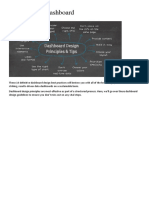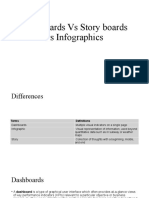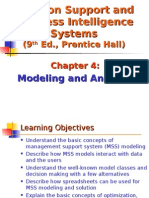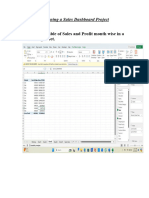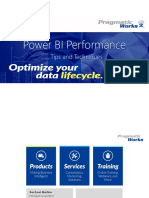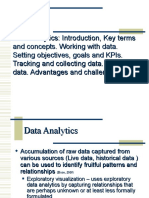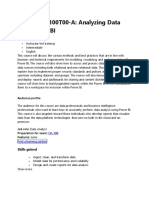0% found this document useful (0 votes)
128 views35 pagesAdvanced Excel DAX Dashboard Guide
This document discusses dashboard design using DAX and visualizations in Excel. It defines DAX as the formula language used in Power BI and Excel for custom calculations and aggregations. It explains key dashboard elements like measures, calculated columns, and star schemas. It also outlines design principles for dashboards like CRAP (contrast, repetition, alignment, proximity) and preattentive attributes. Finally, it lists 10 rules for effective dashboard design focusing on goals, single page layout, alignment, consistency, highlighting key info, formatting numbers, color themes, chart selection, data storytelling, and showing context.
Uploaded by
Rohit PandeyCopyright
© © All Rights Reserved
We take content rights seriously. If you suspect this is your content, claim it here.
Available Formats
Download as PDF, TXT or read online on Scribd
0% found this document useful (0 votes)
128 views35 pagesAdvanced Excel DAX Dashboard Guide
This document discusses dashboard design using DAX and visualizations in Excel. It defines DAX as the formula language used in Power BI and Excel for custom calculations and aggregations. It explains key dashboard elements like measures, calculated columns, and star schemas. It also outlines design principles for dashboards like CRAP (contrast, repetition, alignment, proximity) and preattentive attributes. Finally, it lists 10 rules for effective dashboard design focusing on goals, single page layout, alignment, consistency, highlighting key info, formatting numbers, color themes, chart selection, data storytelling, and showing context.
Uploaded by
Rohit PandeyCopyright
© © All Rights Reserved
We take content rights seriously. If you suspect this is your content, claim it here.
Available Formats
Download as PDF, TXT or read online on Scribd
/ 35
